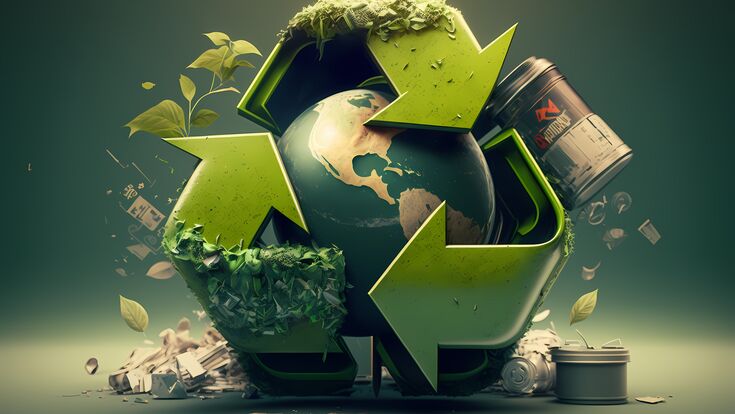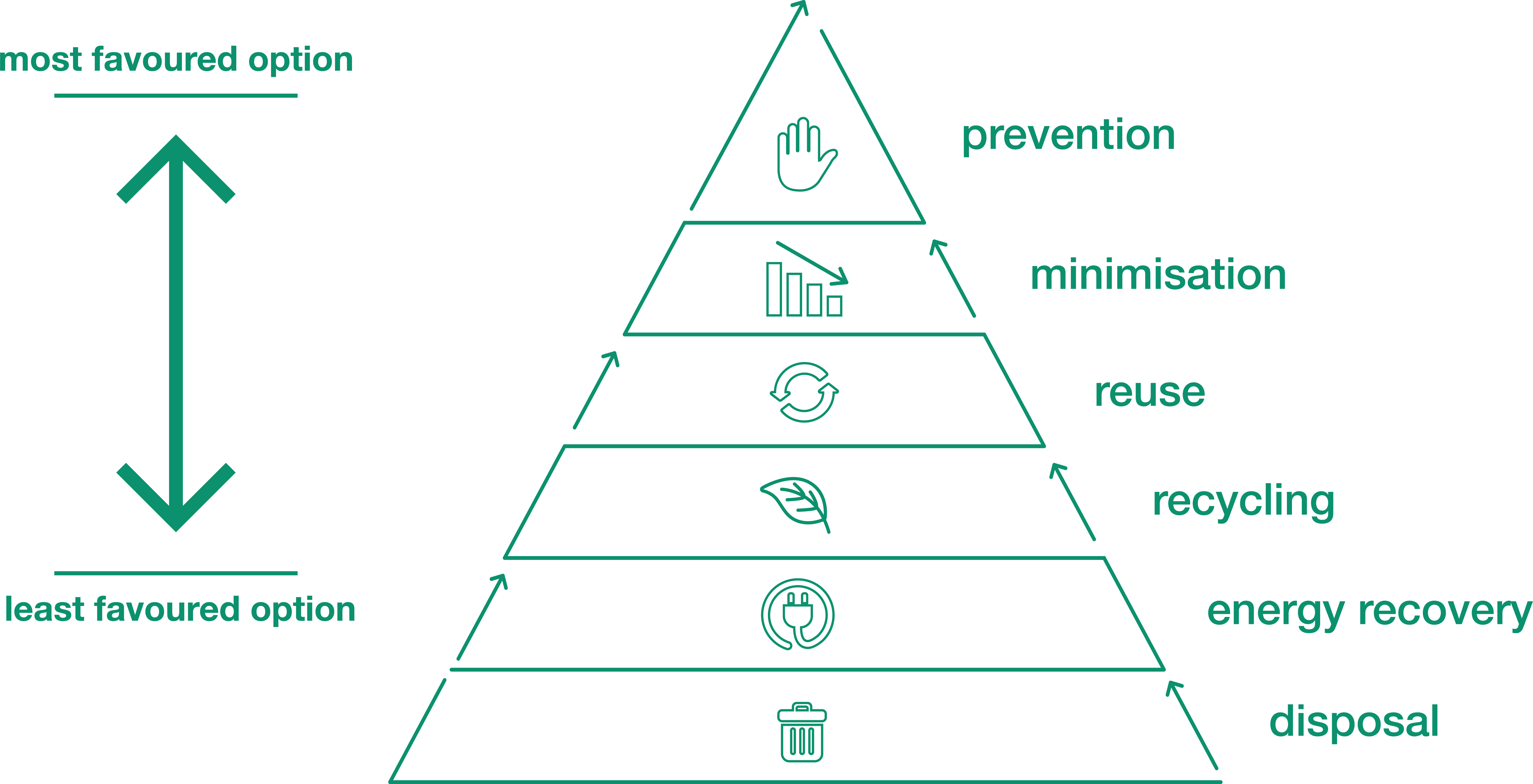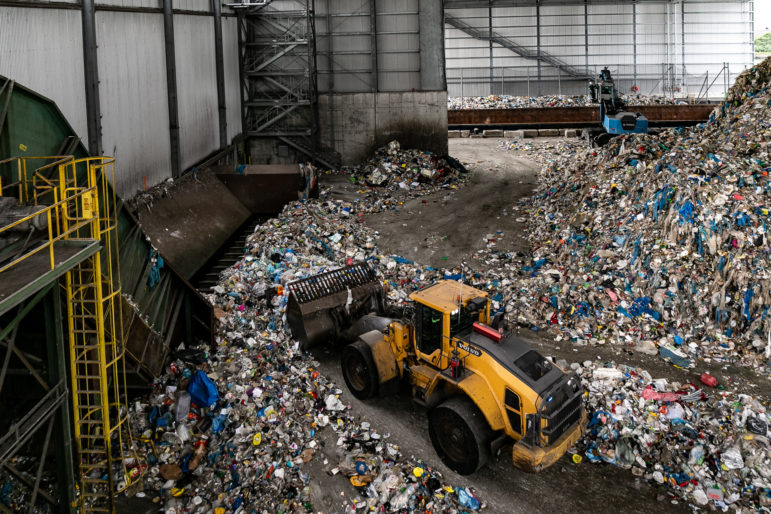Exploring Different Types of Waste in Modern Waste Monitoring Equipment
The modern landscape of waste administration includes navigating a complicated variety of waste types, each requiring specialized handling and disposal techniques to alleviate environmental influences. Metropolitan solid waste, dangerous waste, electronic waste, and natural waste each existing unique obstacles and possibilities for resource healing. Ingenious options such as wise waste bins and waste-to-energy technologies are becoming essential devices in improving performance and sustainability. Understanding these waste types is essential for fostering public awareness and motivating energetic engagement in lasting techniques. What methods can successfully resolve these diverse sorts of waste while promoting a circular economic situation?
Local Solid Waste
Local solid waste, usually referred to as family garbage or waste, includes a selection of disposed of materials produced by residential, commercial, and institutional resources within a community. This waste stream commonly consists of products such as packaging, food scraps, backyard trimmings, paper, plastics, textiles, and disposed of household items. The administration of local solid waste is a crucial part of urban preparation and public wellness, demanding reliable collection, transport, and disposal systems.
Efficient waste monitoring systems are designed to lessen ecological effect while making best use of resource healing. This typically entails a combination of methods including landfilling, recycling, and composting. Recycling programs target materials like paper, glass, steels, and certain plastics, diverting them from land fills and reestablishing them into the manufacturing cycle. Composting organic waste, such as food scraps and backyard trimmings, not only reduces landfill use yet additionally produces important dirt amendments.
Communities should likewise attend to the financial and logistical difficulties linked with waste management. Implementing pay-as-you-throw systems, enhancing public awareness, and buying modern technology can significantly improve waste diversion rates. By integrating these practices, towns can cultivate sustainable neighborhoods, minimize greenhouse gas exhausts, and preserve natural deposits.
Contaminated Materials

Efficient contaminated materials administration involves several vital steps: identification, therapy, disposal, and segregation. Recognition entails the classification of waste based upon its hazardous homes. Partition ensures that dangerous materials are stored independently from non-hazardous waste to stop cross-contamination. Therapy methods, such as chemical neutralization, incineration, and stabilization, are used to decrease the poisoning, volume, or mobility of the waste. Lastly, disposal alternatives, including protected landfills and underground storage, are chosen to guarantee long-lasting containment.
Regulative frameworks, such as the Source Conservation and Healing Act (RCRA) in the United States, give guidelines and standards for hazardous waste management. Adherence to these laws, coupled with advancements in waste therapy technologies, is necessary in mitigating the risks connected with contaminated materials.
Digital Waste
Electronic waste, frequently referred to as e-waste, represents a swiftly growing obstacle in waste monitoring systems globally. This sort of waste incorporates discarded digital tools and devices such as smartphones, computer systems, televisions, and various other electronic appliances. The rapid speed of technological development, coupled with reducing product lifespans and customer need for the most recent gadgets, has exponentially raised the quantity of e-waste created annually.
E-waste is especially problematic as a result of its complex make-up, typically containing harmful substances like cadmium, lead, and mercury, which posture considerable ecological and health and wellness threats if not appropriately managed. On the other hand, e-waste likewise has valuable materials such as copper, gold, and silver, which can be recovered and recycled. The double nature of e-waste-- both important and harmful-- demands specialized handling, reusing, and disposal procedures.
Effective e-waste administration entails stringent regulative frameworks, durable collection systems, and advanced recycling technologies. Public recognition and participation are crucial, as inappropriate disposal techniques, such as illegal disposing and casual recycling, worsen environmental contamination and carcinogen. Improving e-waste administration methods is vital for reducing eco-friendly impact and recuperating beneficial resources in a progressively electronic world.

Organic Waste
Organic waste, making up kitchen area scraps, lawn trimmings, and farming residues, represents a substantial part visit our website of the international waste stream. This sort of waste is biodegradable, implying it can be damaged down visit homepage by bacteria into easier natural compounds. Regardless of its potential for all-natural decomposition, incorrect management of natural waste can lead to damaging ecological impacts, consisting of the exhaust of greenhouse gases such as methane, which add to environment modification.
Efficient management of organic waste is critical for decreasing these environmental effects (recycling lives services). Composting is an extensively adopted method, transforming natural waste right into nutrient-rich compost that can improve soil wellness and farming efficiency. Furthermore, anaerobic digestion is an arising innovation that converts natural waste right into biogas, a sustainable energy resource, and digestate, which can be utilized as plant food
Municipalities and waste administration entities must apply durable natural waste collection and therapy programs to make best use of the benefits of these procedures. Public education and learning campaigns can additionally play a crucial role in motivating houses and services to separate natural waste from other kinds of waste. By focusing on the administration of organic waste, societies can decrease land fill use, reduced greenhouse gas exhausts, and produce valuable results for agricultural use.

Ingenious Waste Management
In the world of waste management, cutting-edge approaches are transforming how cultures manage their refuse, going for sustainability and performance. i was reading this These developments include a variety of modern technologies and techniques that enhance recycling rates, decrease landfill reliance, and lower environmental impact. One noticeable development is the application of clever waste containers geared up with sensing units that monitor fill levels and enhance collection courses. This not only lowers gas consumption however also lessens greenhouse gas discharges.
An additional notable growth is the fostering of waste-to-energy (WtE) technologies. By converting non-recyclable waste right into usable power via processes such as incineration and anaerobic food digestion, WtE minimizes landfill worry and supplies a renewable resource resource. Innovations in chemical reusing allow for the break down of complex plastics right into their original monomers, enabling the development of new, top quality plastic products.
Furthermore, the round economic climate version is acquiring grip, highlighting the layout of products and systems that focus on reusability and source effectiveness. This holistic approach urges markets to lessen waste generation from the start. Via these ingenious techniques, modern waste monitoring systems are not just resolving the prompt challenges of waste disposal however also paving the method for a much more sustainable future.
Conclusion
A comprehensive understanding of municipal solid waste, hazardous waste, electronic waste, and organic waste, paired with the execution of ingenious waste monitoring services, is crucial for mitigating ecological impacts. Incorporating innovations such as clever waste containers and waste-to-energy systems can improve efficiency and sustainability. Effective waste monitoring techniques not only foster resource recovery however likewise advertise public understanding and participation, eventually contributing to the advancement of a circular economy.
The modern landscape of waste management involves navigating a complicated array of waste types, each requiring specialized handling and disposal methods to minimize environmental effects. Local strong waste, unsafe waste, electronic waste, and organic waste each existing distinct difficulties and opportunities for source recovery.Electronic waste, commonly referred to as e-waste, stands for a swiftly growing challenge in waste monitoring systems globally. Through these ingenious techniques, contemporary waste administration systems are not only addressing the immediate difficulties of waste disposal however also leading the method for a much more sustainable future.
An extensive understanding of local strong waste, harmful waste, electronic waste, and natural waste, coupled with the execution of cutting-edge waste monitoring services, is necessary for reducing environmental influences. (recycling lives services)